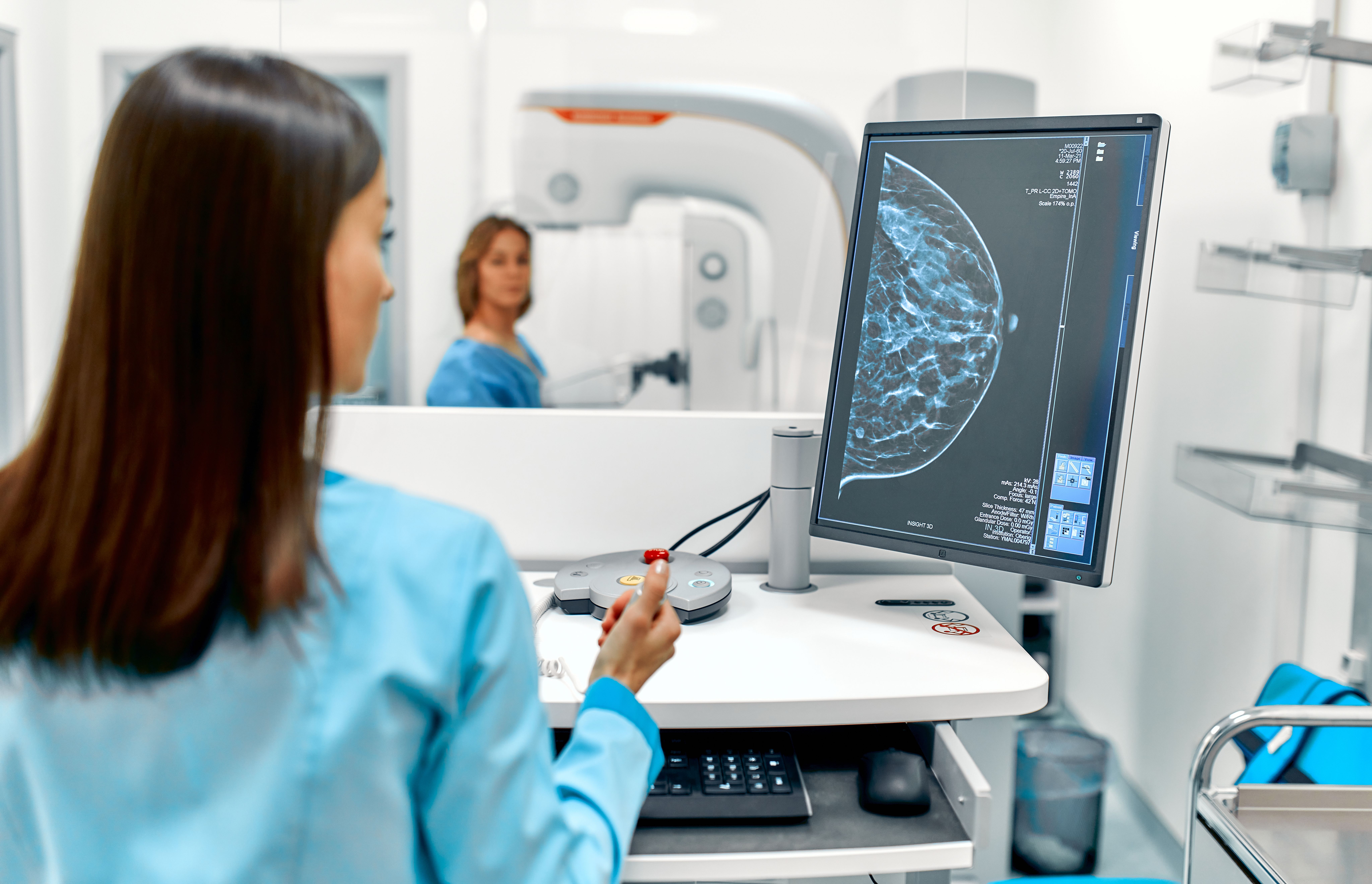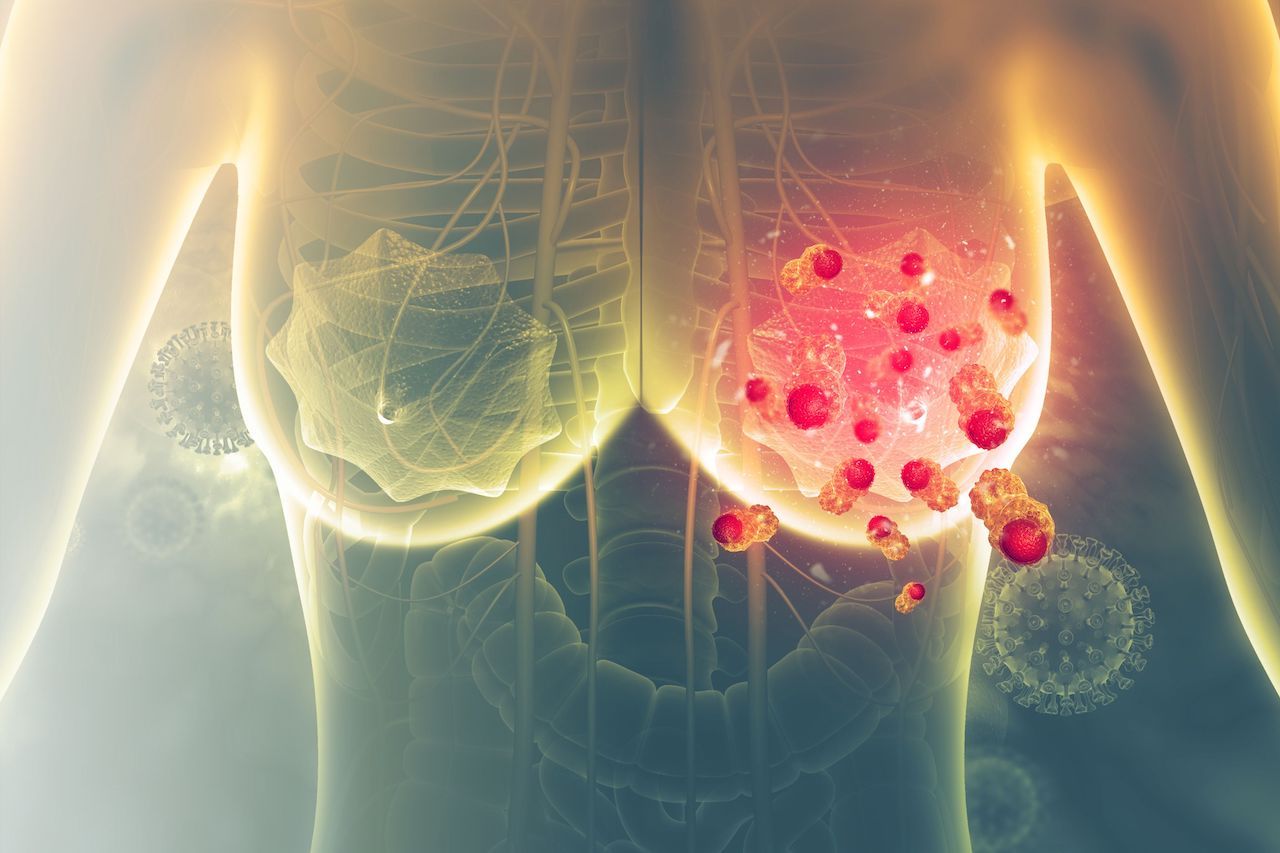Article
PMRT Likely to Have Greater Benefit in Advanced Breast Cancer
Author(s):
A new report from the Republic of Korea compared outcomes among women following neoadjuvant chemotherapy and mastectomy who did or did not receive radiotherapy.
Patients with higher-stage breast cancer who lacked a pathologic complete response (pCR) to neoadjuvant chemotherapy (NAC) or who were positive for minimal residual disease following completion of the treatment before a total mastectomy derived greater benefit from postmastectomy radiotherapy (PMRT), according to new study findings in Cancers.
Outcomes among these patients were compared with those of participants who did not receive PMRT but did undergo NAC and had a pCR prior to total mastectomy. The study authors’ aims were 2-fold: to determine potential PMRT benefits following NAC-induced pCR and to establish who does not need PMRT despite having residual disease.
“As patients with a good response to chemotherapy have a better prognosis, the need for irradiation in these patients should be discussed, although existing guidelines recommend that the need for PMRT should be based on the pre-NAC staging,” the study authors wrote.
All patients included in the final analysis (PMRT group, n = 777; non-PMRT group, n = 137) received a breast cancer diagnosis between October 2006 and January 2018 and underwent a total mastectomy between January 2007 and April 2020 at Gangnam Severance Hospital and Severance Hospital in Republic of Korea. The median follow-up was 56 months, and the overall average age was 48.2 (range, 10-79) years. Most also had estrogen receptor–positive (58%), progesterone receptor–negative (57.5%), or HER2-negative (63.0%) disease. One-third (33.3%) had stage II disease, and 24.0% had stage I disease.
Across both study cohorts, the 5-year locoregional recurrence-free survival (LRRFS) rate was 97.3% in the PMRT group and 96.4% in the non-PMRT group. Corresponding 5-year overall survival (OS) rates were 92.4% and 90.5%. Twenty percent of patients achieved pCR and 22.3% had stage III tumors following NAC. Their mean tumor size was 44 mm, most (92.9%) had clinical node–positive disease, and 82.7% received anthracycline and taxane-based chemotherapy.
Further, those in the PMRT group were more likely to have node-positive disease vs the non-PMRT group, patients with HER2-negative tumors were more likely to undergo PMRT vs patients with HER2-positive disease, and pCR was higher in patients who did not undergo PMRT.
Additional analysis showed the following:
- Prognosis did not differ significantly between the groups, but dividing them by pCR showed that LRRFS (P = .185) and OS (P = .128) were better among those who achieved a pCR.
- Adjusting for age, tumor/nodal stage, ER/PR/HER2 status, and disease stage showed improved LRRFS (HR, 0.27; 95% CI, 0.11-0.71; P = .008) and OS (HR, 0.38; 95% CI, 0.21-0.68; P = .001) in the PMRT group.
- No link was found between PMRT and locoregional recurrent or survival outcomes (LRRFS: not estimated; OS: HR, 0.47; 95% CI, 0.08-2.79; P = .409).
- PMRT was only shown to benefit study participants who did not achieve pCR (LRRFS: HR, 0.24; 95% CI, 0.09-0.62; P = .003; OS: HR, 0.34; 95% CI, 0.18-0.63; P = .001).
- Outcomes were close to equal for LRRFS (P = .999) and OS (P = .453) among the patients who achieved a pCR and who did or did not undergo PMRT.
- LRRFS (P = .012) and OS (P = .006) significantly improved following PMRT among patients who did not achieve a pCR.
- Patients with stage II or III disease saw significantly improved OS vs patients with stage I disease (HR, 0.30; 95% CI, 0.14-0.63; P = .001).
- Patients with no evident lymph node metastases after NAC did not see significantly improved survival rates with PMRT (HR, 1.07; 95% CI, 0.21-5.50; P = .939).
- Patients with lymph node metastases after NAC saw significantly improved survival rates with PMRT (HR, 0.25; 95% CI, 0.12-0.54; P < .001).
The authors highlight that their findings demonstrate both the benefits of PMRT when it is used in conjunction with total mastectomy following NAC and that more information is needed on the treatment among patients who achieved a pCR, “confirming that the patients’ response to NAC is important when determining which patients require, or do not require, PMRT.”
“PMRT should be recommended in patients who have large residual disease after chemotherapy,” they concluded. “However, the benefit of PMRT may vary depending on the patients’ response to NAC.”
Not only is further study needed to clarify their findings, but there is an ongoing prospective study that is examining appropriate criteria for qualifying a patient to receive PMRT after NAC.
Reference
Lee J, Kim JY, Bae SJ, et al. The impact of post-mastectomy radiotherapy on survival outcomes in breast cancer patients who underwent neoadjuvant chemotherapy. Cancers (Basel). Published online December 9, 2021. doi:10.3390/cancers13246205





